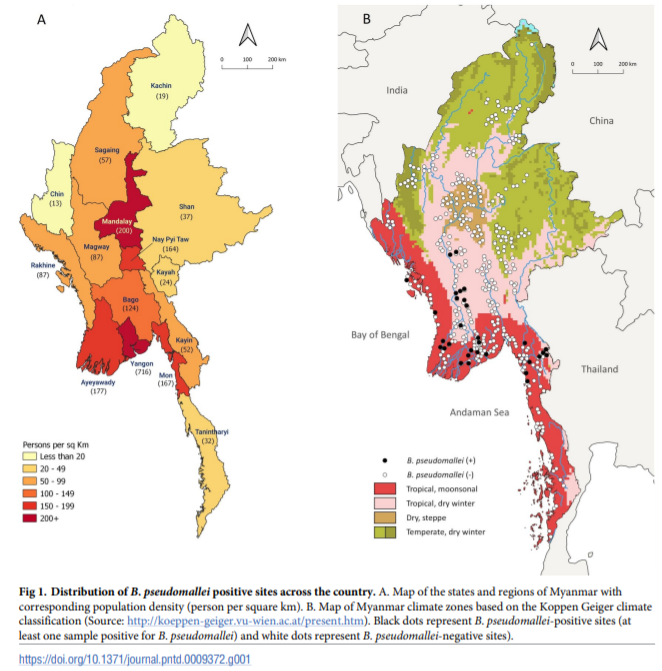Interesting paper and some quick updates about Epi of melioidosis
Direk Limmathurotsakul
Dear everyone,
I would like to share some updates of epidemiology of melioidosis and some from our internal website management (www.melioidosis.info)
[1] The paper attached is about culture-confirmed melioidosis in children with sickle cell anemia in The Democratic Republic of Congo (DRC). [Thanks to David who regularly screen for new paper and share his enthusiasm]. Some of you may have seen this paper and it’s open access. As far as we know, this is the first report of human case from DRC. https://www.syncsci.com/journal/TCPP/article/view/458
[2] David did a quick look thorough all the papers published this year so far (86 papers)
A paper by Adeyemi FM, Akinde SB. ESβL, AmpC and carbapenemase, “co-production in multi-drug resistant Gram-negative bacteria from HIV-infected patients in southwestern Nigeria. African Journal of Clinical and Experimental Microbiology. 2021;22(1):38-51”, claimed to have included 17 isolates of B. pseudomallei from SW Nigeria, which were identified by Microbact 24E. David did follow up and the lead author was willing to collaborate, although nothing has come of it so far.
There have been several reports from the Americas (e.g. Alvarez-Hernandez G, Cruz-Loustaunau D, Ibarra JA, Rascon-Alcantar A, Contreras-Soto J, Meza-Radilla G, et al. Description of two fatal cases of melioidosis in Mexican children with acute pneumonia: case report. BMC infectious diseases. 2021;21(1); Duarte C, Montufar F, Moreno J, Sanchez D, Rodriguez JY, Torres AG, et al. Genomic Diversity of Burkholderia pseudomallei Isolates, Colombia. Emerging infectious diseases. 2021;27(2):655-8; Gee JE, Gulvik CA, Castelo-Branco DSCM, Sidrim JJC, Rocha MFG, Cordeiro RA, et al. Genomic Diversity of Burkholderia pseudomallei in Ceara, Brazil. mSphere. 2021;6(1)) and the usual string of case reports and short series from India (particularly CNS infection) and, to a lesser extent, China, but otherwise it is all the usual suspects (Thailand, Malaysia etc.).
[3] We would love to update these new info on our map at www.melioidosis.info as well. Unfortunately, we can only update the website only when we are physically in our office in BKK. Due to WFH policy during this wave of COVID in Thailand, we can’t update our map at www.melioidosis.info presently. So, please wait for a while.
Hope that this update from David is helpful to you more or less. If anyone want to highlight any news or updates about Epi or any key important things about melioidosis, please feel free to do so via this googlegroup email list (melio...@googlegroups.com).
Wish that everyone is safe and sound.
Kind regards,
Direk
Frank

--
You received this message because you are subscribed to the Google Groups "Melioidosis.info" group.
To unsubscribe from this group and stop receiving emails from it, send an email to melioidosis...@googlegroups.com.
To view this discussion on the web visit https://groups.google.com/d/msgid/melioidosis/KL1PR03MB55534EC17D81F8964C810DA4B6569%40KL1PR03MB5553.apcprd03.prod.outlook.com.
Frank Smithuis
Associate Professor Oxford University
Director
Medical Action Myanmar (MAM)
Myanmar Oxford Clinical Research Unit (MOCRU)
Mobile phone : 95 - 9 - 5093301
